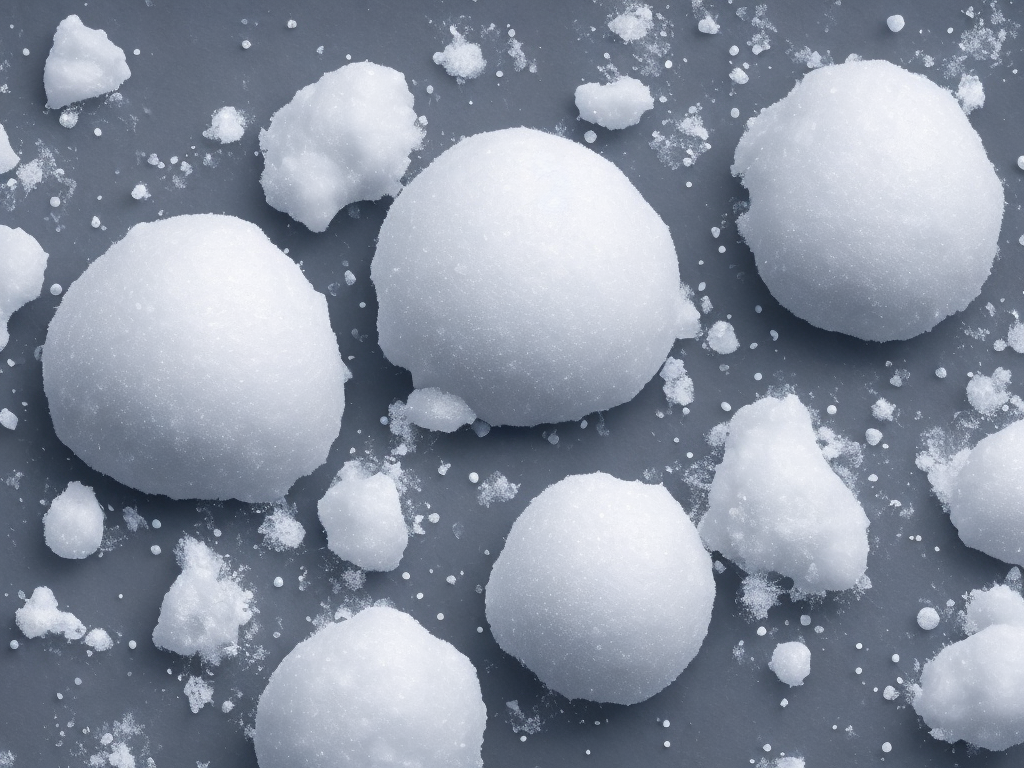
Snow and hail are two different types of precipitation that occur in cold weather conditions. While they are often confused for each other, they differ in their formation, appearance, and properties. In this essay, I will explain the difference between snow and hail, and explore the conditions under which they occur.
Snow is a type of precipitation that forms when water vapor in the atmosphere condenses into ice crystals. These ice crystals then grow and form aggregates in the clouds, which eventually become heavy enough to fall to the ground. Snow typically occurs in areas where the temperature is below freezing and the relative humidity is high. Snowflakes can take on a variety of shapes, ranging from simple hexagonal prisms to more intricate dendrites, needles, and plates. The shape of snowflakes is determined by the temperature and humidity of the air they form in.
Snowflakes can vary in size as well, from tiny crystals that can only be seen under a microscope to large flakes that can cover a person's hand. The largest snowflake ever recorded was reported to have fallen in Montana in 1887 and measured 15 inches wide and 8 inches thick. Snowflakes can also vary in density, with wet snow being heavier than dry snow. Wet snow occurs when the temperature is near freezing, and the snowflakes partially melt and refreeze together, creating a denser, slushy snow.
Hail, on the other hand, is a type of precipitation that forms when water droplets inside a cloud are lifted by an updraft into a colder region of the atmosphere, where they freeze into a solid. As they fall back down, they are carried back up by the updraft where they collect more droplets and freeze again. This process of freezing and falling can occur several times, resulting in hailstones of varying size. Hail typically forms in thunderstorms, where there are strong updrafts and a lot of moisture in the air.
Unlike snow, hailstones can reach much larger sizes, with some measuring over six inches in diameter. However, most hailstones are much smaller, ranging in size from pea-sized to golf ball-sized. Hailstones can be very destructive, as they fall at high speeds and can cause damage to crops, buildings, and cars. Hailstones can also be very heavy, with some weighing several pounds.
While snow and hail are both types of precipitation, they differ in several important ways. First, snowflakes are formed by the condensation of water vapor in the atmosphere, while hailstones are formed by the freezing of water droplets in thunderstorms. Second, snowflakes are made up of ice crystals that grow in clouds, while hailstones are made up of layers of ice that form as they are lifted and carried by updrafts in thunderstorms. Finally, snowflakes are typically lighter and softer than hailstones, which can be heavy and dense.
The conditions under which snow and hail form can vary widely. Snow typically forms in areas where the temperature is below freezing and there is moisture in the air. Snow can form in a variety of ways, including through a process called "supercooling," where water droplets in the air remain in a liquid state even though the temperature is below freezing. When these supercooled droplets come into contact with a surface, they freeze and form ice crystals.
Hail, on the other hand, forms in thunderstorms, where there are strong updrafts and a lot of moisture in the air. Thunderstorms require several conditions to occur, including a source of moisture, instability in the atmosphere, and a trigger to start the storm. As the storm develops, updrafts carry moisture into higher regions of the atmosphere, where it freezes into hailstones. Once the hailstones become too heavy to be carried by the updrafts, they fall to the ground, causing damage and potentially injuring people or animals.
In conclusion, snow and hail are two different types of precipitation that occur in cold weather conditions. While they are both made of ice, they differ in their formation, appearance, and properties. Snow is formed by the condensation of water vapor in the atmosphere, while hail is formed by freezing water droplets lifted by updrafts in thunderstorms. Snowflakes are typically lighter and softer than hailstones, which can be heavy and dense. Understanding the differences between snow and hail can help us prepare for and respond to the weather conditions that bring them.
 Self-Instruct
Self-Instruct